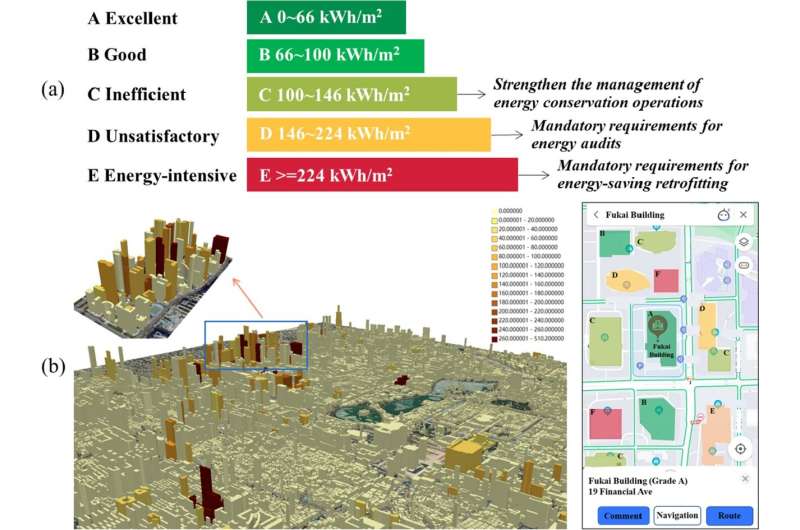This article has been reviewed according to Science X's editorial process and policies. Editors have highlighted the following attributes while ensuring the content's credibility:
fact-checked
proofread
A multifaceted approach for enhancing energy efficiency in China's public buildings

As China cements its status as the world's largest energy consumer, it has set ambitious targets for achieving carbon neutrality, pledging to peak carbon emissions by 2030 and attain carbon neutrality by 2060. The building sector, accounting for over 21% of the nation's total energy use, plays a crucial role in these efforts.
Public buildings, with energy intensities three times higher than residential structures, are particularly critical in the energy efficiency landscape. Despite the Chinese government's deployment of various policy tools aimed at reducing energy use in public buildings, their energy intensities continue to escalate, highlighting the urgent need for more effective strategies to steer the building sector towards sustainability.
In light of these challenges, a study by Tsinghua University, published in the City and Built Environment journal on March 9, 2024, offers an extensive review of existing policies. This research uncovers substantial obstacles in policy implementation, including the complex task of collecting and managing energy data, the absence of robust methods for evaluating building energy performance, and a lack of feedback mechanisms to engage building owners effectively.
The study's comprehensive analysis, which included a review of literature, field investigations, and interviews with industry experts, revealed significant challenges. These include difficulties in collecting and disclosing energy consumption data, a lack of scientific methods for evaluating energy-use levels, and an absence of effective feedback mechanisms for building owners.
The research also identified the unique Chinese approach of energy-consumption quota management, which has not been as widely adopted as the other tools. To address these issues, the study proposes a multi-faceted strategy. It suggests creating a scalable data collection system, similar to those in Beijing, Shanghai, and Shenzhen, to be rolled out nationwide.
The researchers also recommend developing a grading system for building energy consumption based on actual operational data, which would inform a more targeted approach to energy management and policy application. Furthermore, the study calls for the establishment of a carbon trading model specifically for buildings, independent of the existing market, to incentivize energy efficiency through economic means.
Lead researcher Hao Zhou emphasizes, "The building sector is pivotal in China's carbon emission reduction strategy. Our findings offer a detailed analysis of public building energy efficiency policies, providing valuable insights not just for China but for global policy frameworks."
This research points to a need for a more cohesive, data-driven approach in the building sector, highlighting the potential of advanced energy grading systems and the exploration of differential pricing mechanisms and financial incentives to enhance compliance and policy effectiveness.
More information: Hao Zhou et al, Investigation of policy tools for energy efficiency improvement in public buildings in China—current situation, obstacles, and solutions, City and Built Environment (2024). DOI: 10.1007/s44213-023-00023-y

















